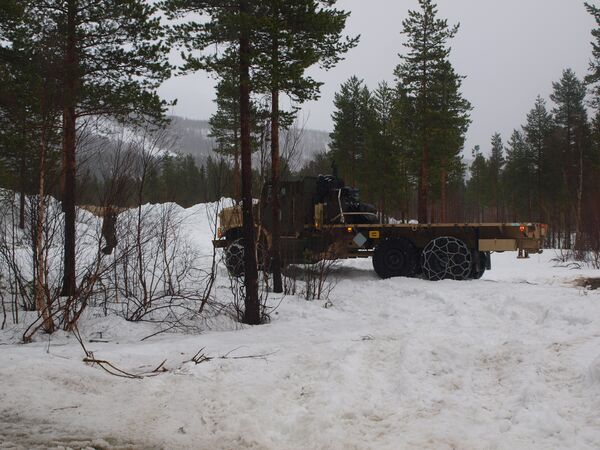
US marines relied on chains on their wheeled vehicles to gain better traction on icy roads during ‘Cold Response 2022' in Norway. (Michael Fabey)
US Marine Corps (USMC) participants in ‘Cold Response 2022' say that logistical planning and pre-exercise weather training made it possible to conduct operations during the challenging environmental conditions faced in March during the event.
“The level of the seas, the swiftness of the weather [changes], and the unforgiving nature of the terrain [would have been difficult to overcome] if we had not done the type of pre-cold weather training and [logistically] provided the equipment and gear set necessary to operate,” noted Brigadier General Anthony Henderson, commanding general of 2nd Marine Expeditionary Brigade and deputy commanding general of II Marine Expeditionary Force (II MEF).
The pre-exercise training and the logistical planning helped create an interoperable NATO maritime force, able to practise the relatively new, high-end tactics developed through the NATO Amphibious Leaders Expeditionary Symposium (NALES) series, Brig Gen Henderson told Janes during a ship-to-shore interview while he was aboard the Italian Navy aircraft carrier Giuseppe Garibaldi (C551) during ‘Cold Response 2022'.
Hosted by the Norwegian military, ‘Cold Response 2022' combines the forces of NATO allies and partner countries, with 27 countries, about 30,000 troops, 20 aircraft, and more than 50 vessels taking part in the exercise.
“We spent a couple of weeks in Wisconsin to learn how to deal with the cold,” USMC First Lieutenant Katie Hass, the Combat Logistics Detachment (CLD) commander for Motor Transport, told Janes on 19 March during a media tour of USMC ‘Cold Response 2022' logistical operations at the Setermoen Military Camp in Far North Norway.
Looking to read the full article?
Gain unlimited access to Janes news and more...





